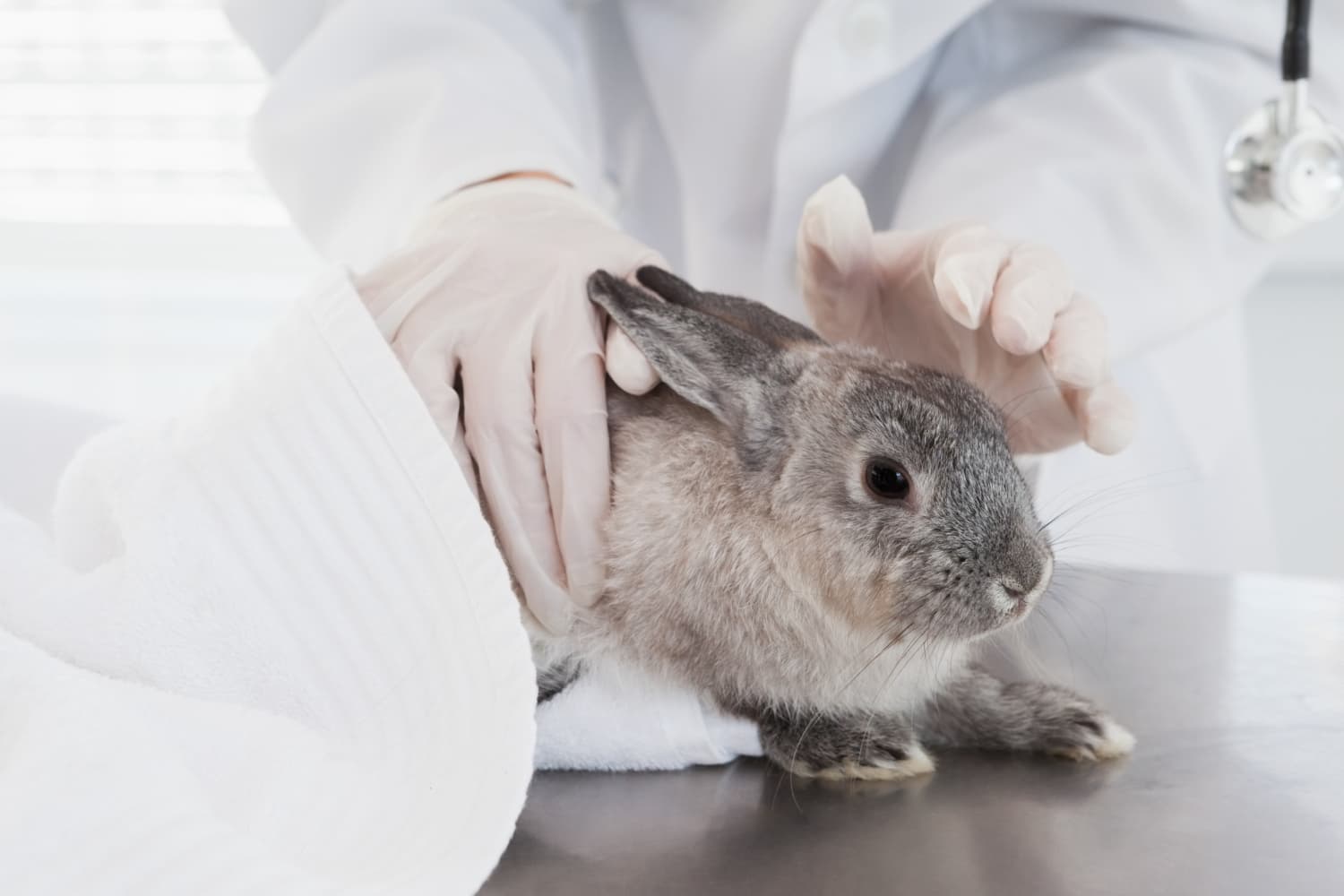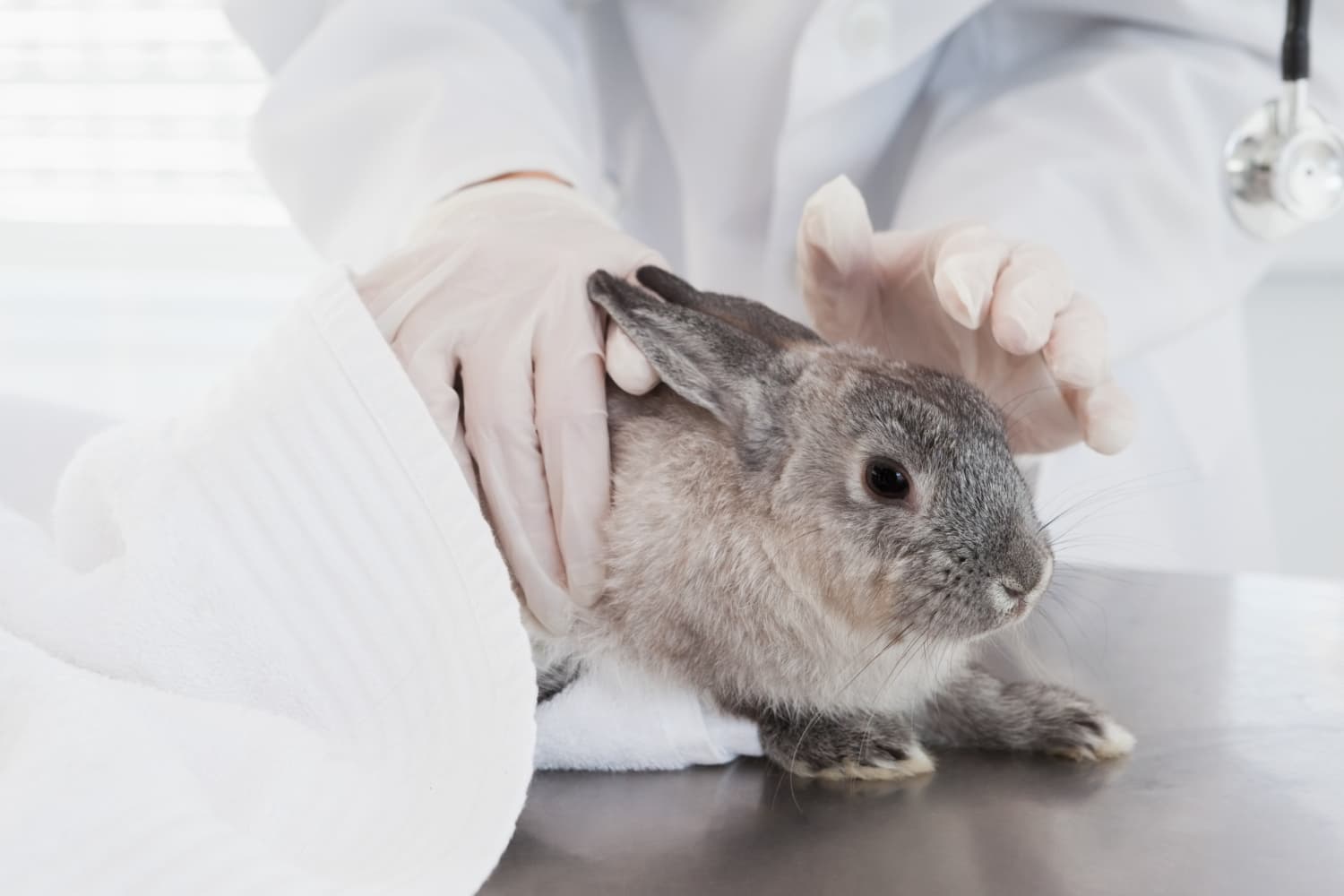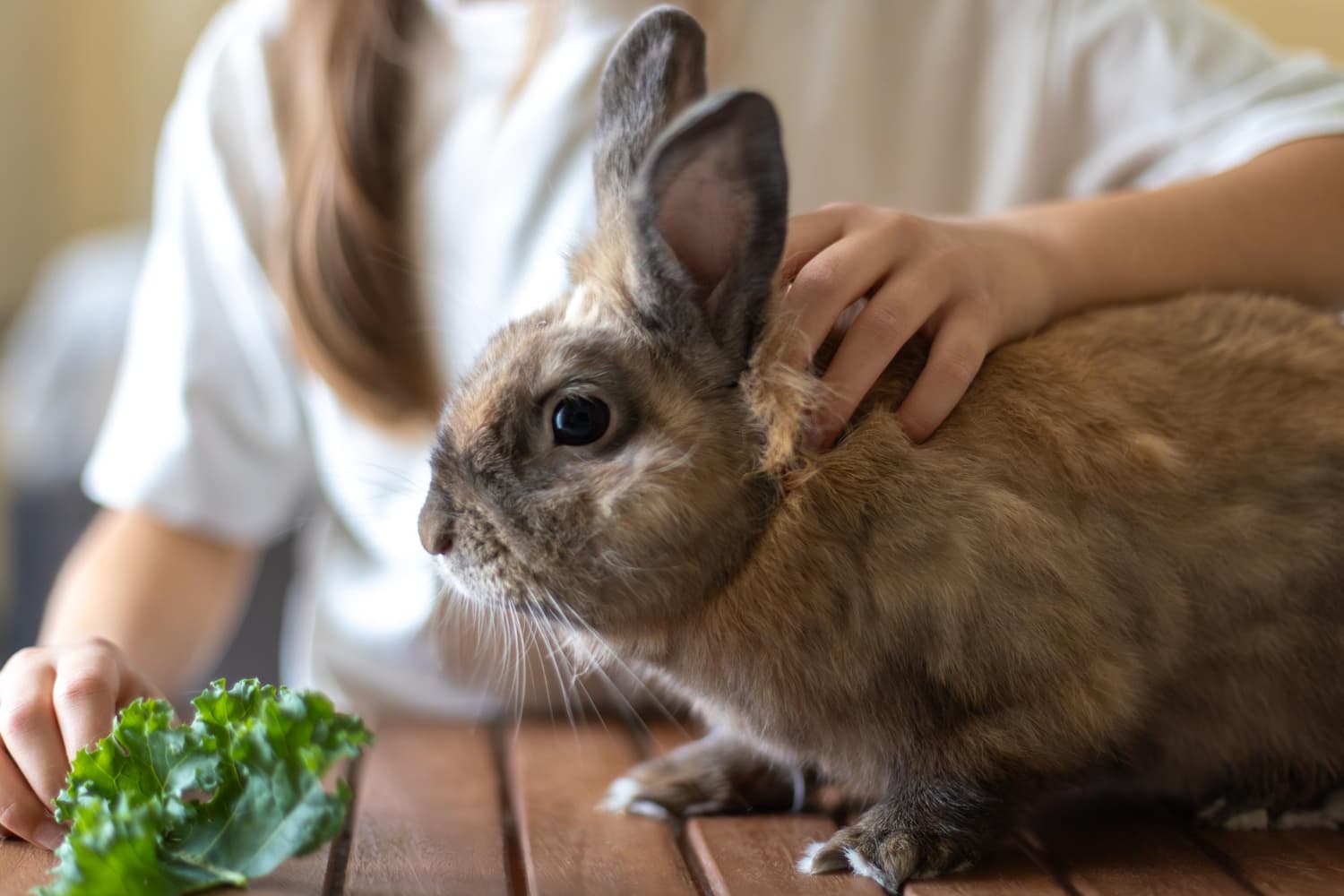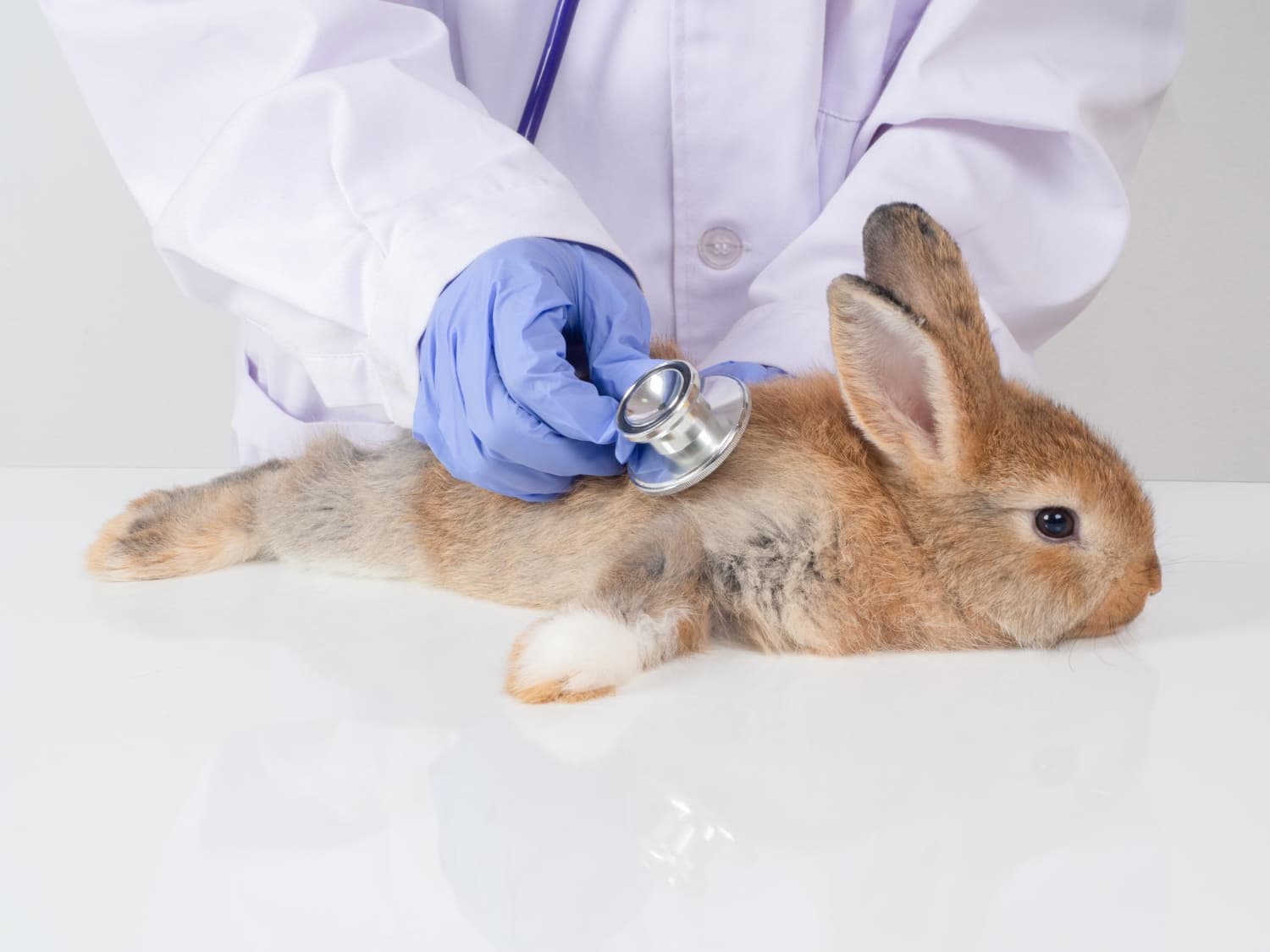Bunny Gastrointestinal Stasis: Causes and Treatment

By Evelyn Harcourt
mei 01, 2025 - 1 min read
Gastrointestinal stasis, sometimes referred to as ileus, is a severe condition that rabbits are prone to. Very sadly, it can be quickly life-threatening without urgent intervention. Affected bunnies go downhill rapidly and can become fatally unwell within just 24 hours.
Fortunately, with early recognition, we can often reverse gut stasis and the rabbit will make a full recovery. This article explores the potential causes, the symptoms to be aware of, and what you can do to help your bunny bounce back quickly.

What is Bunny Gastrointestinal Stasis?
Bunny Gastrointestinal stasis refers to a slowing down or complete stoppage of the GI tract. The gut should constantly move, ensuring the food and liquid are passed efficiently from the mouth to the anus. When stasis occurs, the intestines fill with gas and cause painful bloating.
Causes and Risk Factors
While any rabbit can develop gut stasis, there are known risk factors that can make certain individuals more likely to succumb to it. These include:
Dietary Issues
The most common culprit of GI stasis I see in the clinic is an improper diet. These are bunnies who are fed too many pellets and not enough roughage, such as grass and hay. High-fibre foods like hay should comprise about 90% of rabbits' diet.
As a rough guideline, they should eat a portion of hay (or grass) the same size as them each day.
Stress Factors
Rabbits are not designed to be put under stress. They cope very poorly with any type of stress, whether it be a fox near their enclosure, a thunderstorm or a cold snap. Other forms of stress include a change to their routine, too much handling, or a recent injury.
Another stressor is the loss of a mate or being kept alone. Rabbits are very social creatures, and they should be kept in a group of at least two.
Dental Problems
Dental issues can be genetic, but are often linked to a lack of fibre in the diet. Signs can include tooth grinding, a change in eating habits, weight loss, and drooling. As affected bunnies have difficulty chewing and swallowing fibrous foods, their food intake will plummet.
Lack of Exercise
If your rabbit stands still in the corner, its gut will not move as it should. Too long without exercise can cause gas buildup. Ensure they’ve got a large run and plenty of outdoor access.
Underlying Illnesses
Any sort of illness will cause stress on your rabbit’s body. When dealing with a condition such as Snuffles (caused by Pasteurella) or Myxomatosis, they tend to eat and move about less, so gut stasis becomes much more likely.
Signs and Symptoms of Gastrointestinal Stasis
As a rabbit owner, you must be aware of the signs of GI stasis, so you can act fast should they occur.
Reduced or No Faecal Output
A lack of poos or smaller poos is a surefire sign that your bunny is going into gut stasis. The average rabbit is going to pass about 200-300 poops a day.
You should get into the habit or regularly clean away the poops, so you would quickly notice if they pass less.
Decreased Appetite or Refusal to Eat
Much like pooping, rabbits need to be eating constantly. Going just 3-4 hours without eating would be classed as a ‘red flag’, and a bunny who does this should see an emergency vet right away.
Lethargy, Reluctance to Move
Rabbits are prey animals, so they are active and alert by nature. If they seem sluggish or lethargic, this is alarming and tells us there is something very wrong. Keep an eye out for signs, including hiding away, slow movements, or hunching.
Abdominal Discomfort
As gas builds up, the bunny begins to experience pain. This can manifest as tooth grinding, standing still, and food refusal. Some rabbits will also press their abdomen into the ground and tense up.
Changes in Grooming or Coat Quality
A rabbit who feels unwell and who is dealing with abdominal pain is not likely to spend any time grooming their coat. The fur may appear matted and you might even see clumps of caecotrophs around their back passage. A lack of grooming can also indicate dental disease.
Potential Complications if Untreated
Left untreated, gut stasis usually progresses rapidly, with rabbits becoming less responsive, more bloated, and ultimately passing away within just a couple of days.
Severe Dehydration and Electrolyte Imbalances
Rabbits cannot absorb fluid and nutrients from their gut, so it quickly develop low salt levels and dehydration. As the gastrointestinal contents dehydrate, fluid is pulled from circulation, which can lead to hypovolaemia (blood volume depletion) and shock.
Damage to the Gut Lining
As the gut contents stagnate inside, more gastric acid is secreted, and the stomach and intestines start to become inflamed, eroded, and ulcerated.
Progression
As time passes, more gas builds up and the guts become more damaged. The rabbit will eat and drink less, and eventually will stop passing poo completely. Within hours, they will become clinically dehydrated and can go on to develop hypovolaemic shock.
Once progressed, it is very difficult to reverse GI stasis, and these very unwell rabbits usually pass away.
When to Seek Veterinary Help
When it comes to rabbits, there is no such thing as seeing a veterinarian too soon.As they are a prey species, they are hard-wired to hide signs when they feel unwell. If you think something is wrong, something is likely very wrong and they’re already at the point of needing vet intervention.
Signs of Complete Anorexia
If you have offered your rabbit all of their favourite foods (such as fresh grass, herbs and veggies), and they are refusing anything at all, this is hugely concerning.
Lack of Droppings for 12–24 hours
If your rabbit has not passed poop for 12 hours, there is something wrong. They should be constantly eating and pooping, as they are grazing herbivores.
Sudden Behavioural Changes Like Aggression or Extreme Lethargy
A sudden behaviour change is a clear signal that your rabbit is not happy and is frequently linked to a medical issue such as GI stasis.
This could mean a rabbit that is sleeping all the time, one who is very restless, or a tame bunny that suddenly will not tolerate you near them.
Any Indication of Severe Pain
These guys are usually masters at hiding the signs when they are in pain. If they display symptoms such as grunting, hunching over, flinching, or laboured breathing, you need to have them seen immediately.

Diagnosis for Gastrointestinal Stasis
If you explain to your vet what is going on, they are already going to be highly suspicious of the diagnosis, based on the lack of eating and pooping.
Clinical Examination
They will assess the bunny, checking for any concerning symptoms such as overgrown teeth, crusting around the mouth, laboured breathing, or visible bloating.
They will see if the intestines feel doughy when gently feeling the abdomen. They should also listen with a stethoscope to check for gut sounds.
Imaging
An X-ray may be performed to assess the gas buildup and check for foreign bodies or impaction within the gut.
Blood Tests
A blood test can be useful for assessing glucose levels, as severely elevated levels are a poor prognostic indicator. Your vet may also want to assess salt levels and check for any underlying disease.
Treatment Options for Gastrointestinal Stasis
When it comes to treating GI stasis, our aim is to support the rabbit, rehydrate them, and get that gut moving again. The sooner the therapy is started, the better the prognosis.
Rehydration and Fluid Therapy
Intravenous fluids are undoubtedly the best way to rehydrate a rabbit, and can be given in the ear or sometimes a limb. This is a much more efficient way of delivering fluids than injections under the skin.
Pain Management
These rabbits are in a great deal of pain and need pain relief right away to help reduce stress levels and get them eating. The NSAID Meloxicam and the opioid Buprenorphine are two commonly used options.
Medications to Stimulate Gut Motility
Gut motility drugs like Cisapride and Metoclopramide stimulate the gut to start moving again, helping to shift the food and gas and to relieve the bloating.
Nutritional Support
These patients must eat. If they won’t accept tempting foods, they may have to be syringe-fed during their initial recovery.
Addressing Underlying Causes
Of course, if there is an underlying cause, it must be addressed. This could mean, for example, providing pain relief for arthritis or filing down overgrown teeth. Many bunnies will also need a diet change, which will be introduced gradually.
Surgery may be required if there is a physical blockage within the GI tract.

Prevention and Long-Term Management
Indeed, this is a condition we want to prevent rather than try to treat. This can mean implementing a combination of changes.
Optimal Diet
As discussed, you will want to get your bunny on a fibre-heavy diet. This means lots of grass and hay. An egg cup of pellets can accompany this, as well as some fresh fruit and veg.
Regular Exercise
Give your bunny access to a safe and secure run to encourage plenty of movement. You can also provide games, puzzles, and tunnels to keep them engaged. Similarly, hiding treats for them to forage is a great activity.
Routine Dental Check-ups
Dental disease tends to remain hidden until it is advanced. However, regular dental checks could mean dental issues are addressed before they cause a problem.
Stress Reduction
Do what you can to keep stress levels down. This includes always having at least one companion for your rabbit, providing outdoor access, and minimising handling.
Monitoring Faecal Output
One of the easiest ways to detect an issue early is to know what a normal amount of stool is for your rabbit. If they’re suddenly passing much less, or the poops are small, you know it is time to seek veterinary assistance.
Home Care and Supportive Measures
While gut stasis is a condition that requires a vet visit, once the bunny has been seen and medicated, things can be done at home.
Providing Fresh Water to Maintain Hydration
We want to encourage plenty of water drinking to help replace lost fluids. It is a good idea to offer both bowls and bottles.
Safe Hiding Spots and Minimal Noise to Reduce Stress
Rabbits naturally like to hide away and to be able to have time to themselves. Offer a variety of safe hiding spots.
Gentle Tummy Massages to Stimulate Gut Movement
Depending on how tame your bunny is, they may tolerate you gently massaging their abdomen to help gas move along.
Learn More About Gastrointestinal Stasis in Rabbits
Contact us if you’re concerned your bunny may have gut stasis or want more information. This condition requires urgent intervention, and we are always here to help.
FAQs
How quickly can GI stasis become an emergency?
It can be a matter of hours between noticing your bunny is a bit off their food or moving less and them developing full-blown gut stasis, a condition known to progress rapidly.
Can treats cause GI stasis?
Offering inappropriate or an abundance of treats can trigger an episode, yes.
Is it safe to syringe-feed my rabbit at home?
When done correctly, syringe feeding is a safe and effective way to get your bunny eating more. You can use blended pellets or a commercially prepared liquid diet such as Oxbow Critical Care.
Continue reading

Cat Tail Shaking: Is it an Emergency?
Learn whether your cat's tail shaking is normal, a warning, or urgent.
Read article
Eclampsia in Dogs: Symptoms, Causes and Treatments
Spot eclampsia fast, symptoms, causes, and vet treatments to protect mum and pups.
Read article
Dystocia in Dogs: Symptoms and Treatment
Dystocia in dogs: signs of trouble in labour, vet treatment, and when to call.
Read article